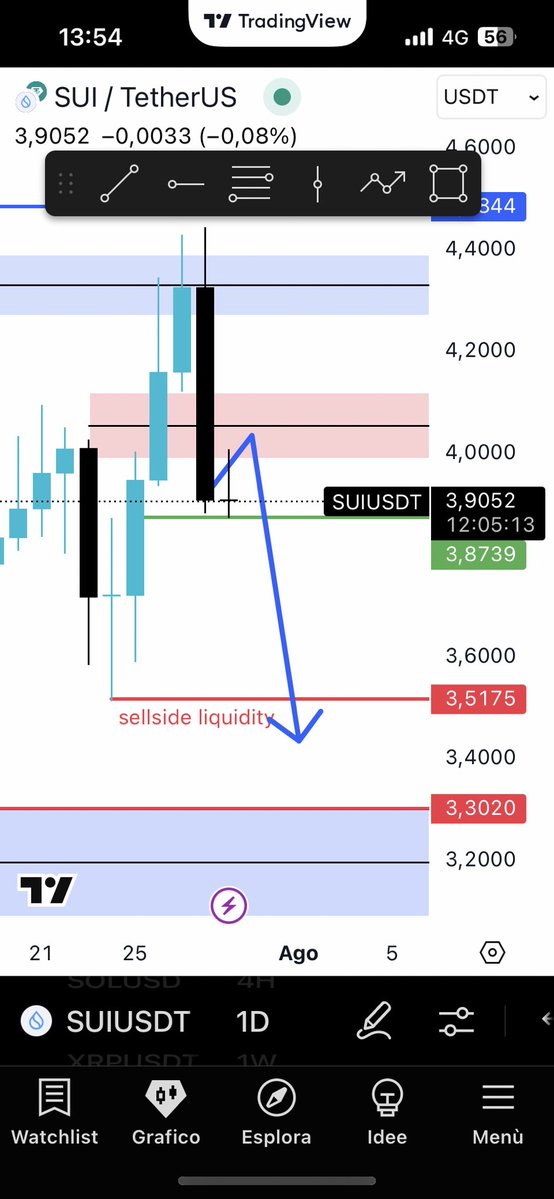The Evolving Landscape of Cryptocurrency Trading
Imagine a world where digital currencies are as ubiquitous as fiat money, where trading cryptocurrencies is as common as trading stocks. This world is not far off. Cryptocurrency trading has undergone a remarkable transformation over the past decade, evolving from a niche activity to a mainstream investment option. As we stand in 2025, the landscape is more dynamic than ever, shaped by institutional adoption, regulatory shifts, and technological advancements. Let’s dive into the current trends and explore what lies ahead for cryptocurrency traders.
Institutional Adoption and Market Sentiment
Institutional Investors: The New Players
The cryptocurrency market has seen a significant influx of institutional investors, transforming it from a speculative playground to a serious investment arena. These institutional players bring with them substantial capital, expertise, and a long-term perspective, which are crucial for market stability and growth. Market sentiment analysis reveals that institutional adoption is a key driver of positive sentiment, with a score of +0.80. This trend is pivotal as it attracts more retail investors, who see the market as more credible and less volatile.
Institutional investors are not just buying and holding; they are actively participating in the market, providing liquidity and depth. This increased participation has led to a more efficient market, with tighter spreads and reduced slippage. Moreover, institutional investors often have sophisticated risk management strategies, which can help mitigate market volatility and protect against significant downturns.
Bitcoin: The Flagship Cryptocurrency
Bitcoin, the original cryptocurrency, continues to reign supreme. Despite facing regulatory concerns, which have a bearish outlook score of -0.45, Bitcoin remains the favorite among both institutional and retail investors. The smart money is moving in, indicating confidence in Bitcoin’s long-term prospects. Bitcoin’s positive sentiment score of +0.65 underscores its enduring appeal and resilience.
Bitcoin’s dominance in the market is a testament to its first-mover advantage and the network effects it has built over the years. As more institutions adopt Bitcoin, its liquidity and market depth increase, making it an attractive option for both short-term traders and long-term investors. Furthermore, Bitcoin’s scarcity, with a fixed supply of 21 million coins, adds to its allure as a store of value, often compared to digital gold.
Regulatory Environment: Navigating Uncertainty
Policy Shifts and Regulatory Clarity
The regulatory environment for cryptocurrencies is in a state of flux, with governments and financial institutions worldwide grappling with how to integrate digital assets into existing frameworks. Recent policy shifts towards crypto-integration in US governance, including the establishment of a strategic Bitcoin reserve and regulatory clarity, are significant developments. These changes are expected to provide a more stable and predictable environment for cryptocurrency trading, fostering growth and innovation.
Regulatory clarity is crucial for the long-term success of the cryptocurrency market. It provides investors with the confidence to participate in the market, knowing that their investments are protected and that the market is fair and transparent. Moreover, regulatory clarity can attract more institutional investors, who are often constrained by regulatory requirements and risk management policies.
The Impact of Regulatory Concerns
Regulatory concerns remain a significant challenge for the cryptocurrency market. The bearish outlook score of -0.45 highlights the uncertainty and potential risks associated with regulatory changes. However, as governments and financial institutions increasingly recognize the benefits of cryptocurrencies, regulatory frameworks are likely to become more favorable.
The impact of regulatory concerns on the market can be seen in the volatility of cryptocurrency prices. Uncertainty about regulatory changes can lead to sharp price movements, as investors react to news and rumors. However, as regulatory frameworks become more clear and stable, the market is likely to become more predictable and less volatile.
Technical Analysis: Key Indicators and Trends
Total Market Cap: Consolidation and Resistance
The total cryptocurrency market cap is currently consolidating within a descending channel, facing rejection from the resistance trendline. The Ichimoku Cloud above acts as a strong resistance barrier, indicating potential downward pressure. Traders should closely monitor these indicators to make informed decisions.
The consolidation phase is a critical period for the market, as it allows for the accumulation of positions and the building of support levels. During this phase, traders should look for opportunities to enter the market at lower prices, with the expectation of a breakout to the upside. However, they should also be prepared for the possibility of a breakdown, which could lead to further downside movement.
Bitcoin and Ethereum: Recovery Signals
Bitcoin and Ethereum, the two largest cryptocurrencies by market capitalization, are showing signs of recovery. Bitcoin has been consolidating between $76K and $85K, with the Relative Strength Index (RSI) turning bullish and increasing volume. The key resistance level at $85K could trigger the next leg up. Ethereum, on the other hand, is stabilizing between $1,450 and $1,650, with the RSI bouncing from oversold territory. The key level to watch is $1,700.
The recovery signals in Bitcoin and Ethereum are encouraging, as they indicate a potential reversal of the recent downtrend. However, traders should be cautious and look for confirmation before entering positions. This could come in the form of a breakout from the consolidation range, or a bullish reversal pattern on the chart.
Technological Advancements: AI and Technical Analysis
The Role of AI in Cryptocurrency Trading
Artificial Intelligence (AI) is revolutionizing cryptocurrency trading by providing advanced technical analysis tools. AI-driven platforms offer free technical analysis, helping traders make data-driven decisions. This technology is crucial for navigating the volatile cryptocurrency market, providing insights and predictions that can enhance trading strategies.
AI can analyze vast amounts of data in real-time, identifying patterns and trends that would be impossible for a human trader to detect. This allows for more accurate predictions and better trading decisions. Moreover, AI can adapt to changing market conditions, learning from past performance and improving over time.
The Future of AI in Cryptocurrency Trading
As AI continues to evolve, its role in cryptocurrency trading is expected to grow. AI-driven platforms will become more sophisticated, offering real-time analysis and predictive modeling. This will enable traders to stay ahead of market trends and make more accurate predictions, ultimately leading to better trading outcomes.
The future of AI in cryptocurrency trading is bright, with the potential to transform the way traders interact with the market. AI can provide personalized trading strategies, tailored to the individual trader’s risk profile and investment goals. Moreover, AI can help traders manage their portfolios more effectively, providing real-time risk management and rebalancing recommendations.
The Future of Cryptocurrency Trading
Embracing Innovation and Adaptability
The future of cryptocurrency trading lies in embracing innovation and adaptability. As the market continues to evolve, traders must stay informed about the latest trends and technological advancements. This includes leveraging AI-driven tools, understanding regulatory changes, and monitoring market sentiment.
Innovation is key to staying ahead in the cryptocurrency market. Traders should be open to new ideas and technologies, and willing to adapt their strategies as the market changes. This could involve incorporating new trading techniques, such as algorithmic trading or high-frequency trading, or exploring new markets, such as decentralized finance (DeFi) or non-fungible tokens (NFTs).
Preparing for a Volatile Market
The cryptocurrency market is inherently volatile, and traders must be prepared for fluctuations. By staying informed and adaptable, traders can navigate the market’s ups and downs more effectively. This includes diversifying portfolios, setting stop-loss orders, and staying updated on market news and trends.
Diversification is a crucial strategy for managing risk in the cryptocurrency market. By spreading investments across different cryptocurrencies, traders can reduce the impact of price movements in any one asset. Moreover, setting stop-loss orders can help limit potential losses, while staying updated on market news and trends can provide valuable insights for making trading decisions.
Conclusion: The Path Forward
The future of cryptocurrency trading is bright, with institutional adoption, regulatory clarity, and technological advancements paving the way for growth. As we move forward, it is essential to stay informed, adaptable, and innovative. By embracing these principles, traders can navigate the dynamic cryptocurrency market and achieve long-term success.
The cryptocurrency market is a complex and ever-changing landscape, but with the right tools and strategies, traders can thrive. By staying informed about the latest trends and technological advancements, and by embracing innovation and adaptability, traders can position themselves for success in the exciting world of cryptocurrency trading.
Sources











